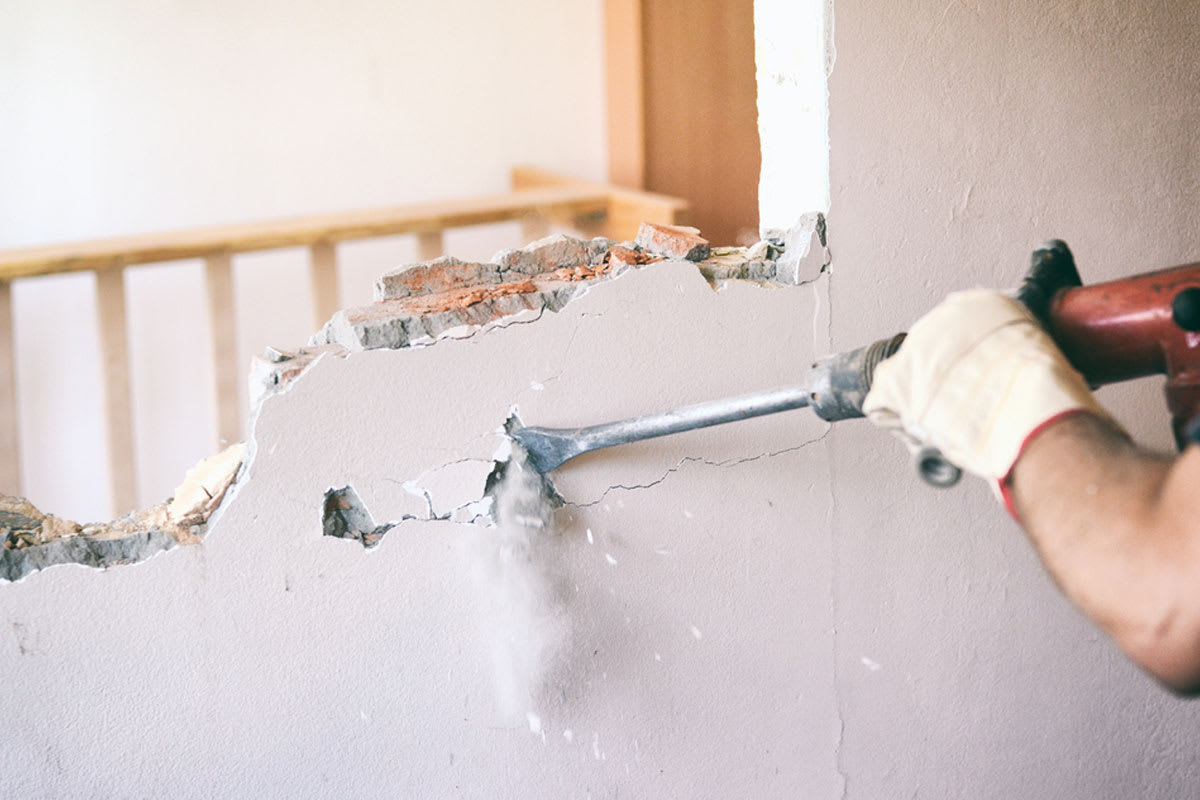Interior Demolition: Key Considerations and Best Practices
Interior Demolition: Key Considerations and Best Practices
Blog Article
The Ultimate Overview to Inside Demolition Techniques and Devices
Within the realm of indoor restorations, the art of demolition is a pivotal stage that calls for precision, skill, and the right collection of devices. Whether you are an experienced professional or a Do it yourself fanatic, understanding the ins and outs of interior demolition techniques can make all the difference in attaining a successful job result.
Important Interior Demolition Devices
When embarking on indoor demolition jobs, having the proper tools is vital for effectiveness and safety. One of one of the most crucial tools for interior demolition is the demolition hammer. This heavy-duty tool is created to damage via challenging materials like drywall, floor tile, and concrete. Its powerful hammering action can swiftly knock down wall surfaces, floorings, and various other frameworks. Furthermore, a crowbar is essential for removing components, trim, and various other products. Its leverage enables the easy extraction of nails and various other fasteners without damaging the surrounding surfaces - interior demolition.
Another necessary device is a reciprocating saw, which is best for reducing through a range of products such as wood, metal, and plastic. Its ability to make exact cuts in limited areas makes it excellent for demolition work. An utility blade is needed for reducing products like rug, vinyl flooring, and insulation. Its sharp blade guarantees exact and tidy cuts, assisting in the elimination of undesirable products. In general, having these crucial indoor demolition tools will substantially enhance the effectiveness and safety of any kind of demolition job.

Safety Precautions During Demolition

Additionally, all employees included in the demolition procedure should receive sufficient training on the correct handling of devices and devices to lessen mishaps. By adhering to these security preventative measures, indoor demolition jobs can be carried out successfully while focusing on the health of all people included.
Methods for Removing Wall Surfaces
Carrying out correct safety precautions during indoor demolition jobs is important for developing a safe and secure working atmosphere, and one crucial aspect of such tasks involves understanding techniques for eliminating walls. One frequently utilized approach is manual demolition, which needs the usage of standard hand devices such as sledgehammers, crowbars, and energy blades to very carefully take apart the wall surface item by item. This technique permits greater control over the demolition procedure, specifically in fragile locations where accuracy is crucial.
For larger, much more complicated wall surfaces, mechanical demolition may be required. This involves making use of heavy equipment like excavators or bulldozers to tear down wall surfaces successfully. It is vital to make sure that the architectural stability of the building is not compromised throughout mechanical demolition.
One more method for removing wall surfaces is deconstruction, where the wall surface is disassembled in a manner that protects reusable products. This lasting technique is ecologically pleasant and can also help in important site reducing disposal expenses. Whichever technique is employed, it is necessary to follow proper safety protocols and think about the structural effects of wall elimination to ensure a successful indoor demolition project.
Removing Floor Covering Like a Pro
Effectively removing floor covering during indoor demolition calls for the proper devices and methods to guarantee a successful and smooth procedure. The very first step in getting rid of flooring is to get rid of the location of any furniture or barriers. Next off, recognize the kind of floor covering to establish the ideal removal technique. For hardwood or laminate floor covering, beginning by getting rid of the walls and then utilize a flooring scrape to lift and separate the slabs. Carpeting elimination entails reducing the rug into manageable areas and rolling it up for disposal. For floor tile or vinyl flooring, a carve or floor scrape can be made use of to pry up the ceramic tiles or sheets. It's vital to use safety equipment such as handwear covers, safety glasses, and a mask to stop injuries and exposure to dirt and particles. In addition, having a dumpster or assigned disposal location ready for the removed floor covering materials is vital for keeping a clean workplace. By following these strategies and utilizing the right tools, getting rid of floor covering like a pro can be attained effectively and successfully.
Appropriate Waste Disposal Methods
After successfully eliminating flooring using the appropriate devices and strategies, the next crucial step in the indoor demolition process is applying correct waste disposal methods. Proper waste disposal is necessary for maintaining a secure my site and clean work setting during and after demolition.

Service providers should stick to regional laws regarding waste disposal to stay clear of fines and fines. Utilizing specialist waste monitoring solutions can simplify the disposal process and make sure conformity with environmental guidelines. By implementing correct waste disposal techniques, interior demolition projects can be completed successfully and sustainably.
Verdict
In conclusion, indoor demolition needs the use of important tools and rigorous security precautions to ensure a risk-free and successful process. By following these standards, indoor demolition can be completed properly and with marginal dangers.
One of the most crucial devices for indoor demolition is the demolition hammer (interior demolition). On the whole, having these crucial interior demolition tools will dramatically boost the performance and safety of any demolition job
Efficiently removing floor covering during indoor demolition calls for the correct devices and techniques to make certain a effective and smooth process.After effectively getting rid of floor covering utilizing the ideal tools and methods, the following important action in the indoor demolition process is executing correct waste disposal approaches.In final thought, indoor demolition requires the usage of vital tools and rigorous safety preventative go right here measures to make certain a effective and risk-free process.
Report this page